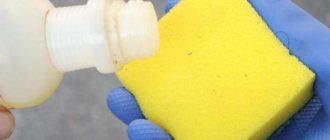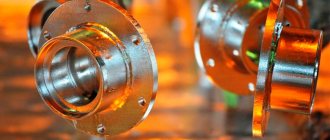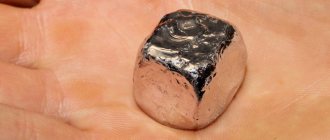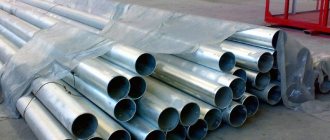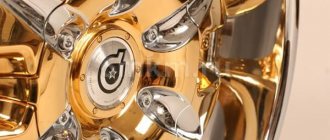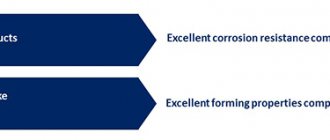0
Increasing the service life of metal parts subject to wear is possible thanks to the galvanic method of applying hard chromium . A hard, wear-resistant layer protects machine parts subject to friction. The savings from increasing the service life of mechanisms are many times higher than the costs of hard chrome plating.
Hard chromium plating is a galvanic technology for the deposition of a derivative of chromium metal from an electrolyte containing chromic acid. There are currently four known methods for measuring the hardness of a material. The most common methods for measuring hardness are Vickers and Shore. All of them involve the penetration of a harder body with known characteristics into the test material, followed by measurement of the deformation dimensions.
The “hard chrome” coating has high hardness and wear resistance. It is resistant to high temperatures.
Chrome plating
According to its position in the voltage series, chromium belongs to the group of electronegative metals. However, due to chromium's exceptional ability to passivate in air, chromium is the cathode in the iron-chromium pair. Thus, chromium does not create electrochemical protection, but can protect iron mechanically, provided that the coating is completely intact.
There are three known methods of chrome plating: chemical, thermal diffusion and electrochemical, which are most widespread.
It is possible to obtain chromium coatings using the electrochemical method on all metals, but it is impossible to deposit other metals on chromium due to poor adhesion of the coating metal to chromium.
The main qualities of electrochemically deposited chromium, thanks to which it is widely used in industry, are its high chemical resistance, heat resistance, resistance to mechanical wear and high reflectivity. Chrome is corrosion resistant in a humid atmosphere, weak solutions of nitric and sulfuric acids, and in alkali solutions due to easy passivation, forming a thin oxide film on its surface. It retains its color and shine for a long time. However, it is easily dissolved in hydrochloric and hot sulfuric acids. The reflectivity of chrome coatings does not change over time, although it is slightly lower than the reflectivity of silver and aluminum coatings. A well-polished chrome surface has high decorative qualities, which are stable over time: chrome does not tarnish even after heating to 400-450° C. Sulfur compounds do not affect chrome.
A characteristic feature of electrochemically deposited chromium is the dependence of its properties on the conditions of electrodeposition. Depending on the chromium plating conditions, deposits with different properties in terms of hardness and reflectivity can be obtained. It has been established that shiny chrome coatings have the highest hardness; the lowest is “dairy”. Chromium coatings have high internal stresses; even in small thicknesses they have cracks. The nature and number of cracks in the chromium deposit can also be controlled by the electrolysis mode.
There are three types of electrochemical chromium deposits: milky, shiny and matte.
- Milk sediment has the lowest hardness, low porosity and the greatest plasticity. No cracks appear in thin layers of mesh; the deposit is well polished and can be brought to a mirror shine.
- Bright chrome is brittle, has high hardness, and is shiny in thin layers.
- Matte chrome has a gray color, it is hard, brittle, and difficult to polish.
Chrome coatings are used in the following cases:
- For protective and decorative purposes. The chrome coating with an underlayer of copper and nickel protects the steel well from corrosion, giving the products a beautiful appearance. Parts of cars, bicycles, appliances, etc. are subjected to protective and decorative chrome plating.
- To increase reflectivity. The reflectivity of chrome plating is second only to that of silver and aluminum, but due to its high resistance to oxidation, the reflectivity of chromium is more stable. Chrome coating is therefore widely used in the production of mirrors, reflectors, and spotlights.
- To increase wear resistance. For this purpose, chrome plating is used in tool production for finishing measuring instruments, dies for drawing metals, etc. Chromium plating of dies and matrices in the manufacture of various products from rubber, plastics, leather, and glass has a great effect. In this case, the chrome coating not only provides wear resistance, but also prevents the pressed materials from sticking to the surface of the dies. The chrome coating significantly reduces the wettability of the mold walls by molten glass or metal. A significant increase in the wear resistance of the rubbing surfaces of cylinder walls and piston rings of internal combustion engines is achieved by using porous chromium plating processes.
- To restore worn sizes. Increasing a layer of chromium on the worn surfaces of heat-treated shafts and bushings allows you to restore the dimensions of parts and thereby increase the service life of products.
The thickness of chrome coatings is established depending on the operating conditions and purpose of the coatings according to industry normative and technical documentation and has the following values (Table 1): Table
1. Thickness of chrome coatings depending on operating conditions
| Coverage type | Thickness, microns |
| By nickel sublayer | 0,5…1,5 |
| For parts made of copper and its alloys | 6,0…9,0 |
| Increasing the wear resistance of molds, dies, etc. | 9…60 |
| Restoring worn out sizes | up to 500 |
FEATURES OF THE CHROME PLATING PROCESS
In contrast to most galvanic processes, chromium plating is carried out with insoluble anodes, and the source of chromium ions is the main component of the electrolyte. Electrochemical deposition of chromium occurs at a sharp negative potential and is always accompanied by the release of hydrogen, as a result of which the current efficiency of the metal in universal chromium electrolytes is 11-18%.
Current efficiency increases with increasing current density and decreases with increasing temperature and chromic anhydride concentration. Cathodic polarization in chromium electrolytes is negligible; Chromium electrolytes have the lowest dissipative power, falling with increasing chromium anhydride concentration and temperature and increasing with increasing current density.
The chromium plating process, unlike other galvanic processes, is carried out at high current densities: 7-50 A/dm2 for stationary solutions and up to 300 A/dm2 for moving electrolytes. Due to the use of high current densities during chrome plating, the pendants must have reliable contact with the cathode rod and parts. The cross-section of the conductors and the material from which the pendants are made are selected in accordance with the calculation.
Another feature of the chrome plating mode is the close relationship between temperature and current density. No electrochemical process is as dependent on fluctuations in electrolyte temperature at a constant current density as the chromium plating process. A change in temperature within 1-2 degrees requires a corresponding change in current density, otherwise the quality of the sediment decreases sharply.
An indispensable condition for the precipitation of chromium from chromic acid solutions is the presence in these solutions of foreign anions that are not reduced and are well adsorbed. Such anions can be sulfate and fluoride ions (SO42- and F—). In all cases, what is important is not the absolute amount of foreign anions in the electrolyte, but their relative content to the amount of chromic anhydride. The permissible ratio of the amount of CrO3 - to the amount of SO4 - should be from 100 to 200. Reducing the value of this ratio by increasing the concentration of sulfates reduces the dispersing and covering abilities of the electrolyte and causes iridescent precipitation; increasing the value of the ratio causes the formation of dark stripes on the chrome coating.
CHROME PLATING ELECTROLYTES
The most widely used electrolytes are those based on chromic anhydride with the addition of sulfuric acid. Chromic acid is the main component that determines the electrical conductivity of the chrome plating electrolyte. A high chromic acid content also corresponds to higher electrical conductivity. However, a high content of chromic acid also has its negative sides: reduced current efficiency and increased consumption of chromic anhydride due to large losses during entrainment with parts. Depending on the concentration of chromic anhydride, electrolytes are divided into three groups: low (100-150 g/l), medium (250-300 g/l) and high (360-450 g/l).
Low concentrations are used for chrome plating of flat or cylindrical parts, where the anode and cathode rods can be brought together to a distance of 100 mm.
Low concentration baths have a narrow operating range, increased current efficiency and good covering power. The disadvantage is the need for frequent adjustment of the electrolyte and the greater tendency of sediments to become brittle and crack. This type of electrolytes is used for hard chrome plating of tools.
Medium concentration baths have a wider operating range, lower current output, and good covering power. The electrolyte is stable, does not require frequent adjustments, and allows the use of high current densities at elevated temperatures. Chromium deposits from these electrolytes are more uniform. This electrolyte is considered universal; it is used to obtain all types of chromium deposits.
The maximum amount of chromic acid 350-450 g/l is used for decorative chrome plating of profiled parts, when it is necessary to use large interelectrode distances, and the current source has a relatively low voltage.
High concentration baths have the widest operating range, but lower current efficiency. The precipitates obtained from this electrolyte are less solid and uniform in color. Most often, universal chrome plating electrolytes are used.
UNIVERSAL ELECTROLYTE FOR CHROME PLATING
Chromium in the electrolyte is present in the form of hexavalent ions, which are discharged at the cathode. For high-quality precipitation, the electrolyte should contain a small amount of trivalent chromium ions (3-10 g/l). Larger amounts of trivalent chromium worsen the quality of the sediment.
It is possible to regulate the content of trivalent chromium in the electrolyte by changing the ratio of the anodic and cathodic current densities. In the presence of a large number of trivalent chromium ions, the electrolyte is processed at a high cathode density and low anodic current density (large anodic surface area). At low cathode current density, hexavalent chromium is reduced to trivalent chromium on the increased surface of steel cathodes. The amount of trivalent chromium can also be increased in another way: by reducing hexavalent chromium to trivalent chromium, by introducing strong reducing agents such as ethyl alcohol, glycerin, and sugar into the electrolyte.
For special types of coatings, the most widely used universal electrolyte is the following composition, g/l: chromic anhydride 250-300; sulfuric acid 2.5-3; trivalent chromium 3-10. Operating mode: temperature 47-50° C; current density 30-50 A/dm2; current output 13%. The duration of deposition of 1 micron is 2-3.2 minutes.
To obtain milky chromium deposits, universal electrolytes and a special chrome plating mode are used: temperature 70-72 ° C; current density 25-35 A/dm2.
SELF-REGULATING ELECTROLYTE CHROME PLATING
It is characterized by a higher current output, greater covering power and aggressiveness due to the action of fluoride ions included in the electrolyte. These electrolytes do not require frequent adjustments, allow high current densities, and produce brilliant deposits in large thicknesses. The electrolyte is adjusted automatically thanks to the poorly soluble salt of strontium sulfate contained in its composition, which, as the amount of sulfate ion in the bath decreases, dissolves and brings the concentration of sulfate ion to the optimal value in accordance with the concentration of chromic anhydride. It should be noted that the aggressiveness and the need for frequent cleaning of the anodes limits the use of this electrolyte.
The composition of the self-regulating chrome plating electrolyte, g/l, is as follows:
- Chromic anhydride, CrO3: 250-300;
- Strontium sulfate, SrSO4: 5.5-6.5;
- Potassium silicofluoride, K2SiF6: 28-20.
Operating mode:
- Temperature: 55-65° C;
- Current density: 40-90 A/dm2;
- Current output: 18-20%;
- Deposition time 1 µm: 2.5-0.8 min.
In addition to the universal and self-regulating ones, there are also tetrachromatic electrolytes, based on organic compounds and others.
TETRACHROMATE ELECTROLYTES
Composed of chromic anhydride and sodium hydroxide, they operate at room temperature with a current output of 30%. Deposition rate 0.6-1 µm/min.
Chromium deposits obtained from this electrolyte are characterized by low hardness (350-400 kgf/mm2) and low internal stresses. Operation of the electrolyte is difficult due to the need for cooling; temperatures above 24° C are not allowed.
The main disadvantage of these electrolytes is the formation of a gray chromium deposit that is difficult to polish.
Composition of tetrachromate electrolyte, g/l: chromic anhydride 380-460; caustic soda 50-70; sulfuric acid 1-1.6; trivalent chromium 8-25. Operating mode: temperature 18-22° C; current density 20-80 A/dm2.
CHROME PLATING IN FLOW ELECTROLYTE
This chromium plating method allows the use of increased current densities while maintaining the same quality of the deposit. This is ensured by continuous renewal of the electrolyte in the near-cathode space due to the flow of electrolyte. The method is most effective when coating mass-produced parts, although it is not widely used due to difficulties associated with the selection of power equipment.
For the flow method of chrome plating, an electrolyte of the following composition is used, g/l:
- Chromic anhydride, CrO3: 180-250;
- Sulfuric acid, H2SO4: 3-3.2;
- Trivalent chromium, Cr (III): 3-10.
The operating mode is as follows (Table 2):
Table 2. Operating mode for the flow method of chrome plating
| Electrolyte movement speed, cm/s | 10…150 | ||
| Temperature, °C | 55…60 | 60…65 | 65…70 |
| Current density, A/dm2 | 50…100 | 100…200 | 200…300 |
| Deposition rate, µm/min | 0,5…1,25 | 1,25…3 | 3…4 |
Preparation and adjustment of chrome plating electrolytes. Depending on the purpose of the coating, chrome plating is carried out in baths of various formulations. However, all chromic acid electrolytes, regardless of the recipe, have the same preparation method.
Chromic anhydride, placed in perforated baskets, is hemmed into a bath of demineralized water and dissolved at a temperature of 40-50 ° C. After complete dissolution, the solution is pumped into the working bath, and according to the results of the tests, it is adjusted with sulfuric acid and trivalent chromium. The preparation of self-regulating chromic electrolytes is different in that after dissolving chromic anhydride in the presence of sulfuric acid, it is precipitated with strontium carbonate, and then the solution is pumped into the working bath, and the prescribed amounts of strontium sulfate and potassium fluoride are introduced into it.
Simple chromium plating electrolytes are adjusted with chromic anhydride and sulfuric acid, in accordance with the results of the analysis, and with special additives - in the case of self-regulating ones. Analysis of chromic anhydride and sulfuric acid content is recommended to be carried out daily. At an increased concentration of sulfuric acid in a simple chromium electrolyte, it is precipitated with barium carbonate.
Harmful impurities. Chromium electrolytes are less sensitive to contamination than all others. The most harmful impurities for them are nitric acid impurities, small quantities of which sharply reduce the operating intervals for obtaining high-quality chromium deposits; with a significant amount of nitric acid, the process cannot be carried out normally. Small metal impurities do not significantly affect chrome plating. Large amounts of iron and copper narrow the operating range of current density required to obtain high-quality precipitation; iron content greater than 10 g/l reduces the current efficiency.
The maximum permissible amount of iron and copper impurities is up to 10 g/l, nitric acid and its mixtures is up to 0.1 g/l.
ANODES FOR CHROME PLATING
Lead is used as anodes in chrome baths in an alloy with antimony, tin, and in some cases silver and thallium. Lead in these alloys is the main component (90-95%). Antimony imparts hardness to the anodes, and the additions of silver, tin and thallium promote uniform dissolution and prevent the formation of a passive film on them.
For chrome plating in self-regulating electrolytes, anodes made of a lead-tin alloy with a tin content of 8-10% are used.
For chrome plating in universal electrolytes, in addition to lead-antimony anodes, anodes made of a ternary alloy are often used: lead-antimony-tin, lead-antimony-silver; lead-antimony-thallium. Thallium additives are used for hard chrome plating, silver additives (1.5-2%) are used mainly for decorative chrome plating. To obtain the most uniform precipitation, it is recommended to maintain the ratio of the anode surface area to the cathode surface equal to 2:1 or 3:2.
When flow-through anodic jet chrome plating, perforated anodes with holes with a diameter of 4-5 mm are used; the area of the holes should be 5-10% of the working surface of the anodes.
REMOVAL OF POOR-QUALITY CHROME DEPOSITS
Removal of chromium deposits is carried out electrochemically at the anode in alkaline solutions or chemically in hydrochloric acid at room or elevated temperature. Heating speeds up the removal process. After treatment in hydrochloric acid, neutralization in a 5% soda ash solution is required.
The technological process diagrams for macroporous and hard chrome plating are different (principal order of operations):
MICROPOROUS CHROME PLATING
- Ultrasonic degreasing;
- Suspension mounting;
- Processing with sandpaper or vulcanite wheel;
- Warming up in chrome electrolyte;
- Chrome plating;
- Dechroming (performed after grinding in parts);
- Catching;
- Chromium restoration;
- Double cold rinsing;
- Dismantling;
- Hot rinsing;
- Drying – dehydration (if necessary);
- Lapping.
HARD CHROME PLATING
- Suspension mounting;
- Degreasing at the cathode;
- Warm rinsing;
- Cold flushing;
- Warming up in chrome electrolyte;
- Anodic activation in chromium electrolyte;
- Chrome plating;
- Catching;
- Chromium restoration;
- Double cold rinsing;
- Dismantling;
- Washing is hot;
- Drying (if necessary, parts are dehydrated).
Loading…
Taking too long?
Reload document
| Open in new tab
Download [368.51 KB]
Health Hazard
Yes, chrome-plated metal is a corrosion-resistant material, but such a useful coating must be applied with the greatest care.
Because one of the two main components of the electrolyte, namely the anhydride (CrO3), is very toxic. Both in the form of crystals and dissolved in water and forming acids, it is a source of carcinogens. Cr salts and oxides are low-volatile, but this should not be reassuring, since as a result of heating (under the influence of an electrolyte) they can evaporate, mix with water vapor and then settle on the skin.
This is why it is so important to work in goggles, a respirator, gloves and overalls - so that harmful substances get on the fabric. Remember, if such a harmful substance is absorbed through the pores, enters the body through mucous membranes or in some other way, this is fraught with the development of serious diseases, including tumors. Therefore, it is simply necessary to strictly follow safety precautions.
We examined step by step how chrome plating of parts occurs, how to prepare for it, and what you need to remember when carrying out the process. Now that you understand all the risks of chemical deposition at home, we urge you to approach the procedure with the utmost responsibility and caution. can help you - we sell bandsaw machines, to clarify the information you are interested in, contact our managers at the contact numbers listed on the page.
CHROME COATING OF METAL WITH BUFFER LAYERS FOR PROTECTIVE AND DECORATIVE PURPOSES
The thickness of the layer for decorative purposes is no more than 1 micron. Its main function here is to protect the metal from tarnishing. To protect the part from environmental corrosion, an additional thin layer of copper and nickel must be applied before the chrome. The size of intermediate coatings is determined based on operating conditions.
The sequence of application of layers is varied.
For example , copper in a cyanide or pyrophosphate electrolyte is applied to steel parts, then copper in an acidic electrolyte, nickel, and then chromium.
It happens that they make do with coating a thick layer of copper in a cyanide or pyrophosphate electrolyte.
There is also this method: metal products are coated with 1-2 microns of nickel, then with copper in an acidic electrolyte, again with nickel, and finally with chromium.
Zinc parts are usually coated with copper in a cyanide electrolyte, and then coated with nickel and chromium.
Copper and brass parts are nickel and chrome plated.
The thickness of the intermediate layers and the nickel layer, which is located under the chromium, is determined in each specific case. Sometimes it is necessary to apply a non-porous chrome coating directly to the steel. This is necessary in cases where, in addition to protective anti-corrosion properties, resistance to mechanical wear is required.



